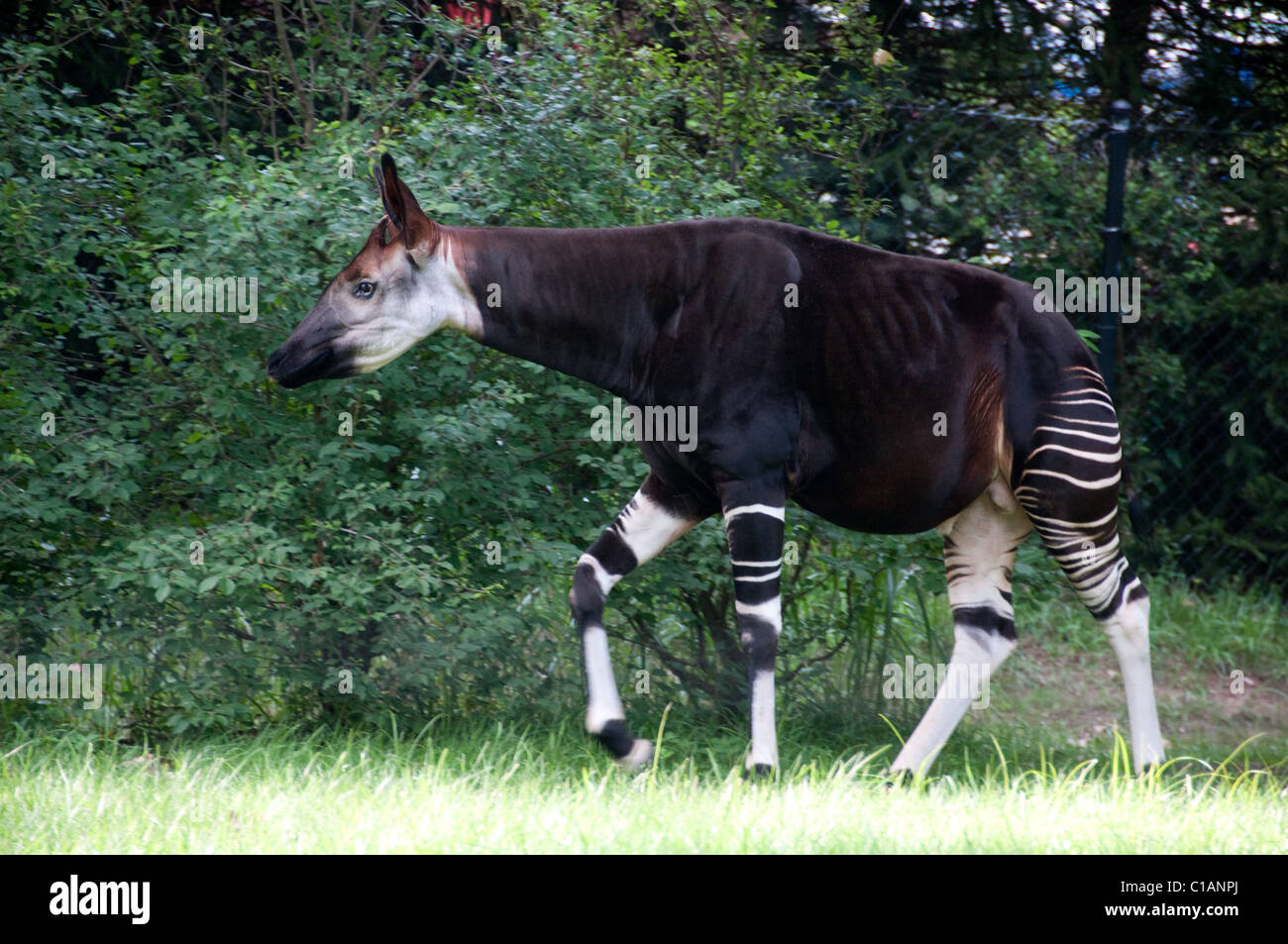Okapi; Okapia johnstoni; Columbus Zoo and Aquarium; North America

Image details
Contributor:
Stan Gregg / Alamy Stock PhotoImage ID:
C1ANPJFile size:
34.9 MB (1.7 MB Compressed download)Releases:
Model - no | Property - noDo I need a release?Dimensions:
4288 x 2848 px | 36.3 x 24.1 cm | 14.3 x 9.5 inches | 300dpiDate taken:
21 July 2010Location:
Columbus Zoo and AquariumMore information:
The velvet-like coat is generally dark chestnut-brown or purplish red in colour, with distinctive pattern of horizontal stripes, much like those of a zebra, on the upper legs. The lower legs are white, with dark garters at the joints. The vaguely horse-like head is generally lighter, with a black muzzle, and is supported by a thick neck. The ears are large, and the black tongue is long and prehensile. The body is sloped, with the forequarters much higher than the rear. Males have two skin covered 'horns' or knobs on the forehead which develop between one and five years of age. Ontogeny and Reproduction Gestation Period: 14-15 months. Young per Birth: 1 Weaning: After 6 months. Sexual Maturity: Females at 2 years, males later. Life span: Over 30 years. Ecology and Behavior The okapi is active during the day, using fixed, well-trodden paths through the jungle. To locate breeding partners, okapis use their well-developed sense of smell. While usually silent, okapis may make a soft cough during the rut. Young animals, on the other hand, have a wide repertoire of noises, including coughs, bleats, and whistles. The number of these vocalizations increase when the mother and child are separate. Mothers are very protective of their young, defending it vigorously. Before fighting begins, the female sends out a threat by beating on the ground with her forelegs. Estimated population densities range from 0.8-2.3 animals per square kilometer. Okapis have individual home ranges of about 2.5-5 square kilometer, which they move through at the rate of about a kilometer per day as they forage. The okapi finds the minerals its body needs by eating a sulfurous clay found along river banks.. Family group: Solitary, or in temporary small groups. Diet: Leaves, grasses, fruit. Main Predators: Leopard. Distribution Dense, moist jungle near water throiughout the Ituri Forest in the Democratic Republic of Congo.